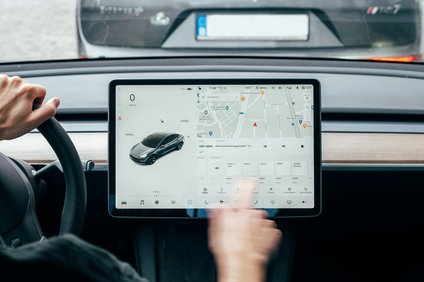Research - 10.06.2021 - 00:00
HSG study investigates purchasing behaviour during the pandemic
How has Covid-19 changed our purchasing behaviour? How much do we spend on goods every year online and offline? These questions are answered with regard to Germany, Austria and Switzerland by a new study entitled “Omni-Channel Management 2021”.

10 June 2021. This study by the Institute of Retail Management at the University of St.Gallen (IRM-HSG) shows that the importance of omni-channel management is increasing: retailers profit from a variety of sales and distribution channels, with the online trade being the clear winner in comparison with other sales channel during the pandemic.
The shop closures caused by the pandemic in March 2020 had a seriously adverse impact on the retail trade. Numerous retailers were forced to establish new distribution channels and to improve existing sales channels within next to no time. “Omni-channel management” is what experts call the distribution of goods through different channels, be it digitally directly to customers at home or through orders and collection at the entrance to the shop during the pandemic. This diversified form of distribution has become more important in the pandemic.
Prof. Dr. Thomas Rudolph, Dr. Kristina Kleinlercher and Nora Kralle from the Institute of Retail Management at the University of St.Gallen (IRM-HSG) have now investigated the purchasing behaviour of omni-channel shoppers in Germany, Austria and Switzerland. For the fourth time after 2011, 2014 and 2017, more than 3,000 consumers were interviewed about their purchases from omni-channel retailers which offer their products and services both online and in stationary shops. The results of this study help companies in the retail, industry and service sectors to understand changes in channel-crossing purchasing behaviour.
Covid-19 has substantially changed our purchasing behaviour
The survey was conducted six months after the first lockdown. At the time of the interviews, in November 2020, the shops had been able to reopen after just under six months. The results thus indicate lasting changes in purchasing behaviour. In this context, the following developments are noteworthy:
- Covid-19 has radically changed shopping behaviour. Since the beginning of the crisis, about 40% of the consumers interviewed have avoided stationary shops if possible and have had products and services delivered to their homes.
- Omni-channel shopping, in which offline and online contact points are used, has become more popular.
- In the pandemic, online shops have replaced stationary shops as the shopping channel of preference. As late as 2017, stationary shops came first as purchasing channels of preference. 56% of interviewees then shopped in stationary sales outlets. In late 2020, after approx. six months of lockdown, this preference had dropped to a mere 43%.
- Both the shopping frequency and the amounts spent on online shops distinctly increased. The corona pandemic accelerated this trend.
- The smartphone markedly gained in significance as a device for online shopping. In only four years, online orders through smartphones increased from 9% to 30%.
- Amazon further reinforced its strong position as an important contact point in the customer journey in Germany and Austria. In many industries, Amazon has meanwhile become one of the five most important contact points.
Online trade the winner of the corona crisis
The results of the survey underline that the online trade has been the winner in the crisis. They also reveal, however, that omni-channel shopping, in which both offline and online contact points are used, has gained in popularity: in 2021, 39 out of 100 interviewees used at least one online contact point (rating portal, newsletter, etc.) and one offline contact point (catalogue, newspapers, shop, etc.). In 2014, only 30 out of 100 interviewees did so. Despite the pandemic, during which shops have sometimes been closed, this need for a combination of both shopping channels has become more important.
Improved customer experience, higher outlays
Customers who use only one contact point rate their customer experience with 3.65 on a scale of 7, whereas consumers who use more than 7 contact points rate their customer experience with 4.11. It is not only the perceived customer experience, but also the average amount spent that increases with the number of contact points used. Click & Collect, i.e. the option of ordering products online and then picking them up in a stationary shop, provides retailers with a considerable turnover increase potential: consumers who use Click & Collect in Switzerland spend 100% more in comparison with pure online buyers. The survey was financially supported by Handelsverband.Swiss, Boost Group AG, Retail Capital Partners and SAP.
Picture: Unsplash/Henrik Donnestad
More articles from the same category
This could also be of interest to you
Discover our special topics
















